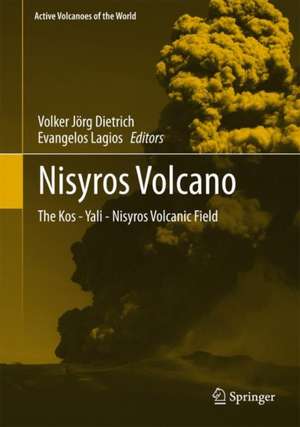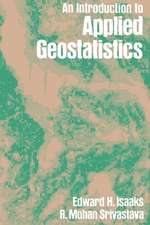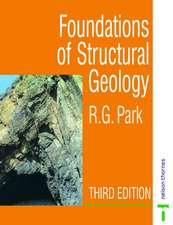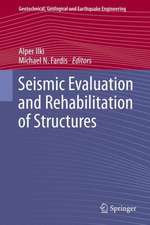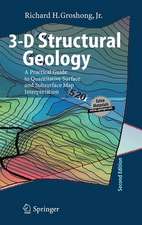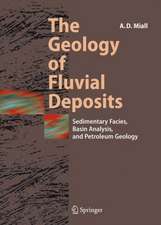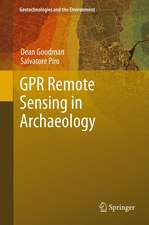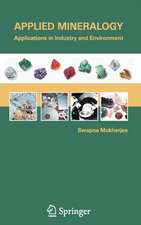Nisyros Volcano: The Kos - Yali - Nisyros Volcanic Field: Active Volcanoes of the World
Editat de Volker Jörg Dietrich, Evangelos Lagiosen Limba Engleză Hardback – 24 aug 2017
This book presents the first compilation of scientific research on the island of Nisyros, involving various geoscientific disciplines. Presenting a wealth of illustrations and maps, including a geological map of the volcano, it also provides valuable insights into the geothermal potential of Greece.
The island of Nisyros is a Quaternary volcano located at the easternmost end of the South Aegean Volcanic Arc. The island is nearly circular, with an average diameter of 8 km, and covers an area of approximately 42 km2. It lies above a base of Mesozoic limestone and a thin crust, with the mantle-crust transition located at a depth of approximately 27 km. The volcanic edifice of Nisyros comprises a succession of calc-alkaline lavas and pyroclastic rocks, as well as a summit caldera with an average diameter of 4 km.&nbs
p;Nisyros marks the most recent volcano in the large prehistoric volcanic field between Kos-Yali-Strongyli-Pyrgousa-Pachia-Nisyros, where the largest eruption (“Kos Plateau Tuff”) in the history of the eastern Mediterranean devastated the Dodecanese islands 161,000 years ago. Although the last volcanic activity on Nisyros dates back at least 20,000 to 25,000 years, it encompasses an active hydrothermal system underneath the volcano with temperatures of roughly 100°C at the Lakki plain, the present-day caldera floor and 350°C at a depth of 1,550 m.
A high level of seismic unrest, thermal waters and fumarolic gases bear testament to its continuous activity, which is due to a large volume of hot rocks and magma batches at greater depths, be
tween 3,000 and 8,000 m. Violent hydrothermal eruptions accompanied by major earthquakes occurred in 1873 and 1888 and left behind large, “world-wide unique” explosion craters in the old caldera. Through diffuse soil degassing, the discharge of all hydrothermal craters in the Lakki plain releases 68 tons of hydrothermal-volcanic derived CO2 and 42 MW of thermal energy per day. This unique volcanic and hydrothermal environment is visited daily by hundreds of tourists.| Toate formatele și edițiile | Preț | Express |
|---|---|---|
| Paperback (1) | 946.37 lei 38-44 zile | |
| Springer International Publishing – 3 aug 2018 | 946.37 lei 38-44 zile | |
| Hardback (1) | 1122.10 lei 43-57 zile | |
| Springer International Publishing – 24 aug 2017 | 1122.10 lei 43-57 zile |
Preț: 1122.10 lei
Preț vechi: 1368.41 lei
-18% Nou
Puncte Express: 1683
Preț estimativ în valută:
214.78€ • 233.38$ • 180.53£
214.78€ • 233.38$ • 180.53£
Carte tipărită la comandă
Livrare economică 21 aprilie-05 mai
Preluare comenzi: 021 569.72.76
Specificații
ISBN-13: 9783319554587
ISBN-10: 3319554581
Pagini: 468
Ilustrații: XII, 339 p. 472 illus., 449 illus. in color.
Dimensiuni: 178 x 254 mm
Greutate: 0.83 kg
Ediția:1st ed. 2018
Editura: Springer International Publishing
Colecția Springer
Seria Active Volcanoes of the World
Locul publicării:Cham, Switzerland
ISBN-10: 3319554581
Pagini: 468
Ilustrații: XII, 339 p. 472 illus., 449 illus. in color.
Dimensiuni: 178 x 254 mm
Greutate: 0.83 kg
Ediția:1st ed. 2018
Editura: Springer International Publishing
Colecția Springer
Seria Active Volcanoes of the World
Locul publicării:Cham, Switzerland
Cuprins
1 Geography, Nature and Habitation of Nisyros Volcano.- 2 Geodynamics and Volcanism in the Kos-Yali-Nisyros Volcanic Field.- 3 Geology of Nisyros Volcano.- 4 Petrology and Geochemistry of Lavas and Pyroclastics.- 5 The Hydrothermal System and Geothermal Activity.- 6 Geophysical Monitoring: Seismicity and Ground Deformation in the Kos-Nisyros-Yali Volcanic Field.- 7 Epilogue: Nisyros Volcanic Island, the Inaccessible Outpost between Orient and Occident, Home of a Restless Giant.
Textul de pe ultima copertă
This book presents the first compilation of scientific research on the island of Nisyros, involving various geoscientific disciplines. Presenting a wealth of illustrations and maps, including a geological map of the volcano, it also provides valuable insights into the geothermal potential of Greece.
The island of Nisyros is a Quaternary volcano located at the easternmost end of the South Aegean Volcanic Arc. The island is nearly circular, with an average diameter of 8 km, and covers an area of approximately 42 km2. It lies above a base of Mesozoic limestone and a thin crust, with the mantle-crust transition located at a depth of approximately 27 km. The volcanic edifice of Nisyros comprises a succession of calc-alkaline lavas and pyroclastic rocks, as well as a summit caldera with an average diameter of 4 km.&nbs
p;Nisyros marks the most recent volcano in the large prehistoric volcanic field between Kos-Yali-Strongyli-Pyrgousa-Pachia-Nisyros, where the largest eruption (“Kos Plateau Tuff”) in the history of the eastern Mediterranean devastated the Dodecanese islands 161,000 years ago. Although the last volcanic activity on Nisyros dates back at least 20,000 to 25,000 years, it encompasses an active hydrothermal system underneath the volcano with temperatures of roughly 100°C at the Lakki plain, the present-day caldera floor and 350°C at a depth of 1,550 m.
A high level of seismic unrest, thermal waters and fumarolic gases bear testament to its continuous activity, which is due to a large volume of hot rocks and magma batches at greater depths, be
tween 3,000 and 8,000 m. Violent hydrothermal eruptions accompanied by major earthquakes occurred in 1873 and 1888 and left behind large, “world-wide unique” explosion craters in the old caldera. Through diffuse soil degassing, the discharge of all hydrothermal craters in the Lakki plain releases 68 tons of hydrothermal-volcanic derived CO2 and 42 MW of thermal energy per day. This unique volcanic and hydrothermal environment is visited daily by hundreds of tourists.Caracteristici
Presents the first compilation of scientific research on the island of Nisyros, involving various geoscientific disciplines Features a wealth of illustrations and maps, including a geological map of the volcano Provides valuable insights into the geothermal potential of Greece Includes supplementary material: sn.pub/extras
